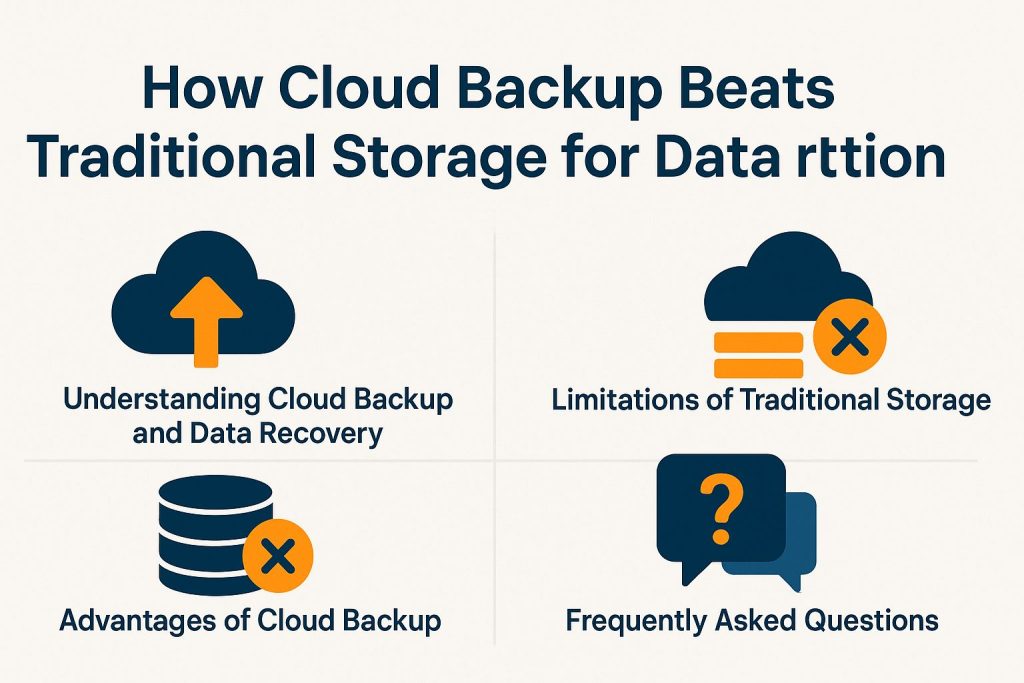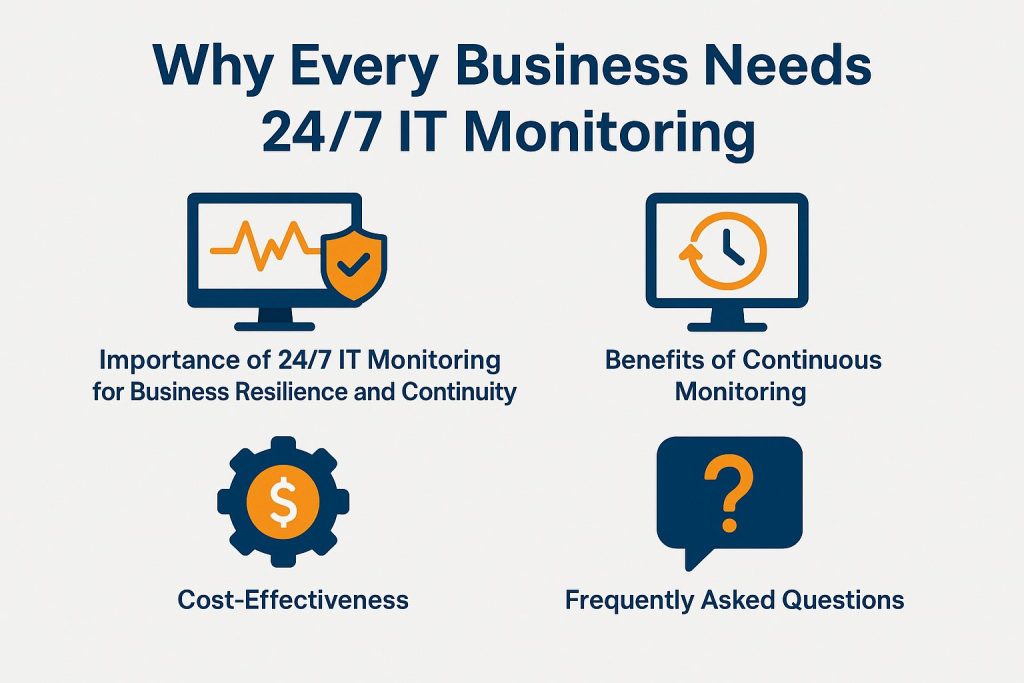Cloud vs On-Premise: Which IT Setup Is Best for Your Business?
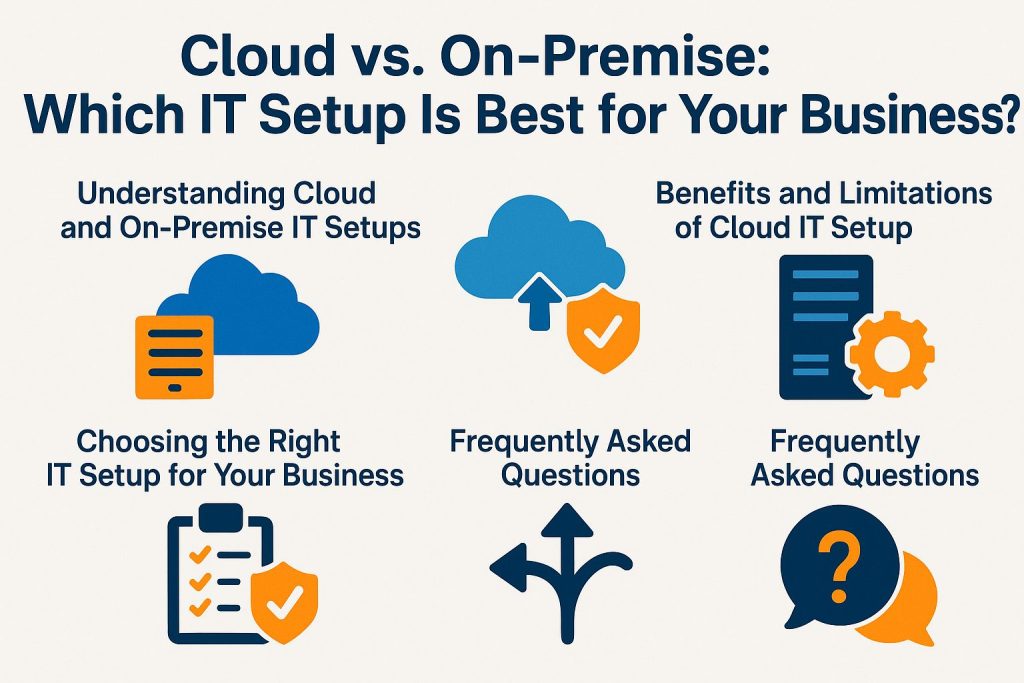
Today, businesses must decide. They can adopt a cloud-based IT setup or keep on-premise solutions. This choice affects IT infrastructure and business technology strategies. These affect scalability, cost, control, and security in different ways. This article explores the key differences between cloud and on-premise IT setups. It examines their advantages and challenges, including cost, data security, and scalability. It also offers guidance on how to select the most suitable solution based on specific business needs. Whether a business is a small startup or a large enterprise, understanding these setups is essential. It helps streamline operations and improve efficiency.
Understanding Cloud and On-Premise IT Setups
In the contemporary technological landscape, businesses are increasingly confronted with the decision between cloud computing and on-premise solutions for their IT infrastructure.
Cloud setups include public, private, and hybrid models. Each meets different business needs. On-premise solutions offer organizations greater control over data and systems architecture. Effective IT infrastructure management and resource optimization are crucial in both scenarios.
Understanding the key differences between these approaches is essential. It helps make informed decisions about efficiency, scalability, security, and compliance.
Additionally, with advancements in cloud technologies, businesses must consider factors such as cost analysis, data storage capabilities, and operational expenses inherent to each option.
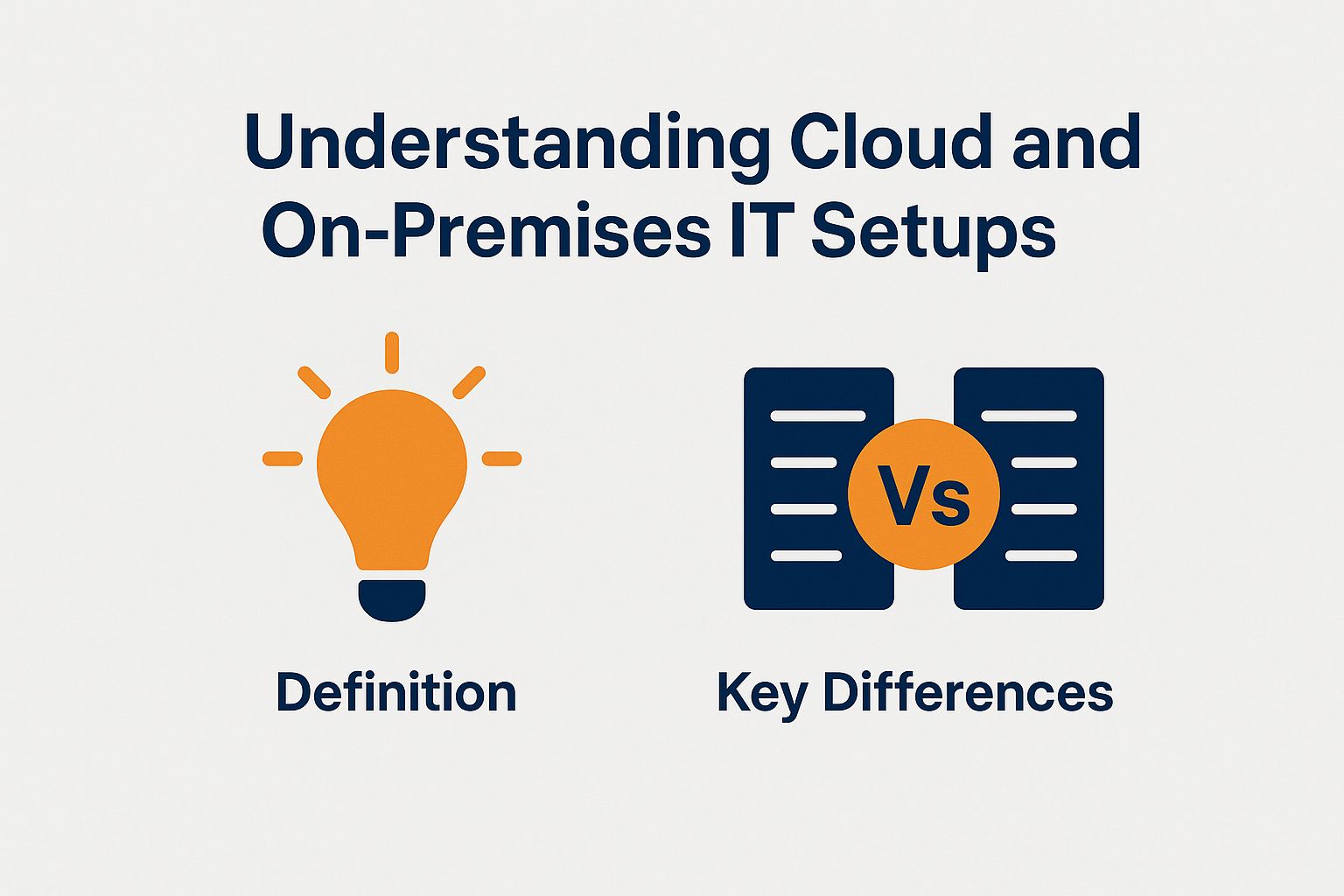
Definition and Key Differences
Cloud computing delivers services over the internet. It provides organizations with flexibility, scalability, and remote access capabilities. In contrast, on-premise solutions involve maintaining IT infrastructure within traditional physical facilities, which offers greater control and customization for businesses.
This distinction is essential for organizations when evaluating their IT strategies, considering factors such as IT management, user experience, and vendor lock-in. Cloud solutions allow companies to adjust resources rapidly according to demand, often resulting in lower upfront costs due to reduced hardware investments. On the other hand, on-premise setups require a substantial investment in physical infrastructure, ongoing maintenance, and IT management.
Organizations utilizing cloud services may face challenges such as vendor lock-in, which complicates the migration process to other platforms. Additionally, they may encounter potential issues related to system integration, as varying data formats and platforms can hinder seamless operations.
Therefore, it is imperative for organizations to carefully consider these factors to determine which approach aligns best with their long-term goals.
Benefits and Limitations of Cloud IT Setup
Cloud IT setups have many advantages. They include better scalability, cost savings, improved security, and faster implementation. They enable rapid data storage solutions and provide access to software as a service (SaaS) applications, which significantly streamline operations and facilitate business continuity.
However, organizations must consider limitations. These include budget constraints, compliance challenges, and dependency on the internet that may arise from cloud adoption.
Companies that utilize cloud technologies should perform comprehensive cost analyses and risk assessments to ensure alignment with their long-term business strategies. For those looking to optimize their IT infrastructure, exploring expert technology services can provide additional support and guidance.
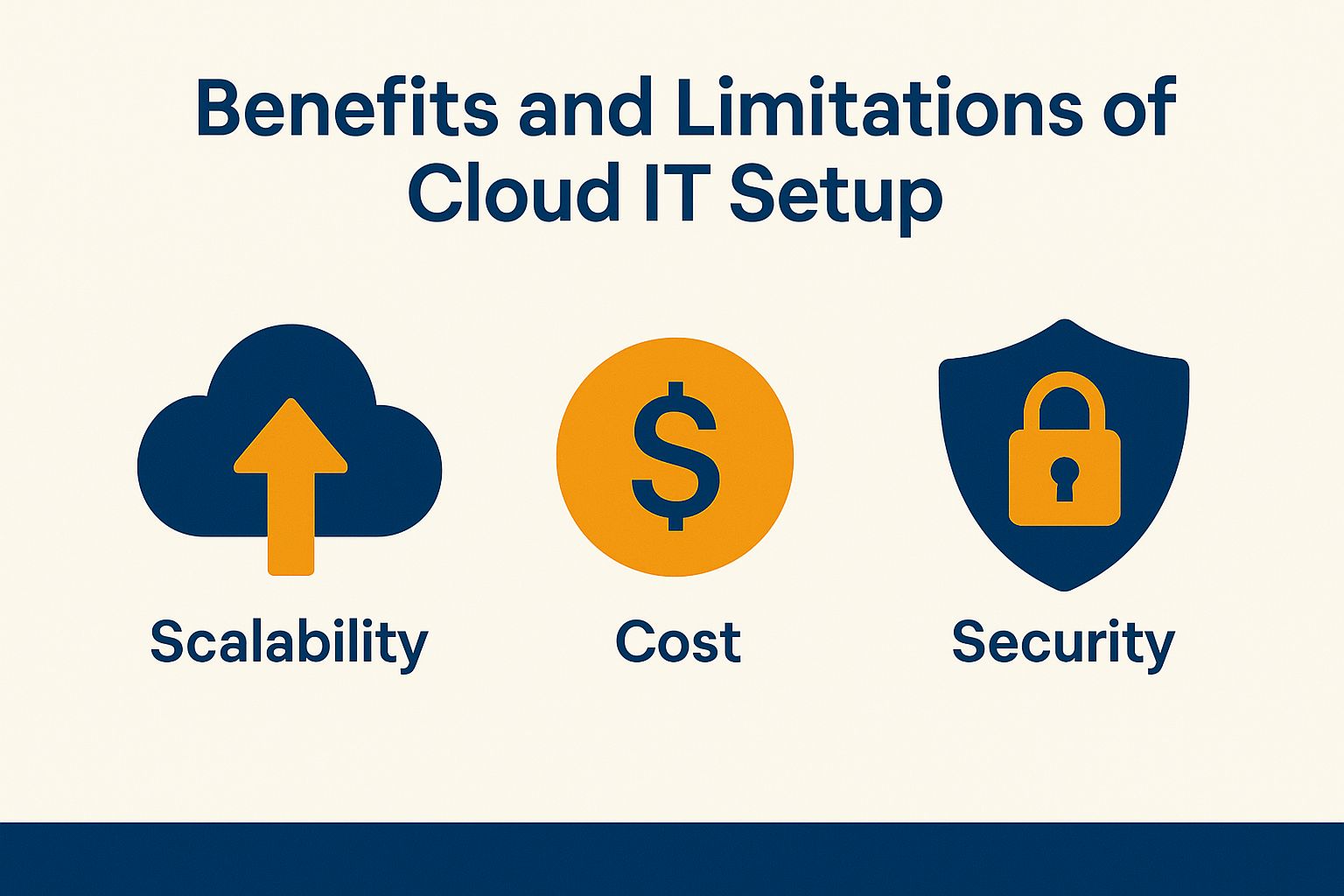
Scalability, Cost, and Security Considerations
Scalability in cloud IT setups lets businesses adjust resources easily. This offers advantages in cost management, detailed cost analysis for budgeting, and reduced initial costs.
Organizations can optimize expenditures by dynamically allocating resources. This aligns costs more closely with actual usage. This flexibility also affects security. Enterprises can adjust their security measures with resources. This enhances data protection and compliance with regulations.
In this environment, performance monitoring and robust service-level agreements (SLAs) are essential; they ensure that cloud services remain reliable, performance metrics are met, and any potential disruptions are addressed promptly.
Businesses must evaluate vendors carefully. They should consider disaster recovery, service availability, and backup solutions to reduce the risk of data loss. This highlights the need for thorough assessments. These should go beyond pricing to include service reliability and backup plans.
Advantages and Disadvantages of On-Premise IT Setup
On-premise IT setups provide distinct advantages, including enhanced control over IT infrastructure, greater customization capabilities, and often superior uptime due to localized hardware management and effective access control.
These factors can significantly influence an organization’s operational costs, security compliance, and long-term investment strategies.
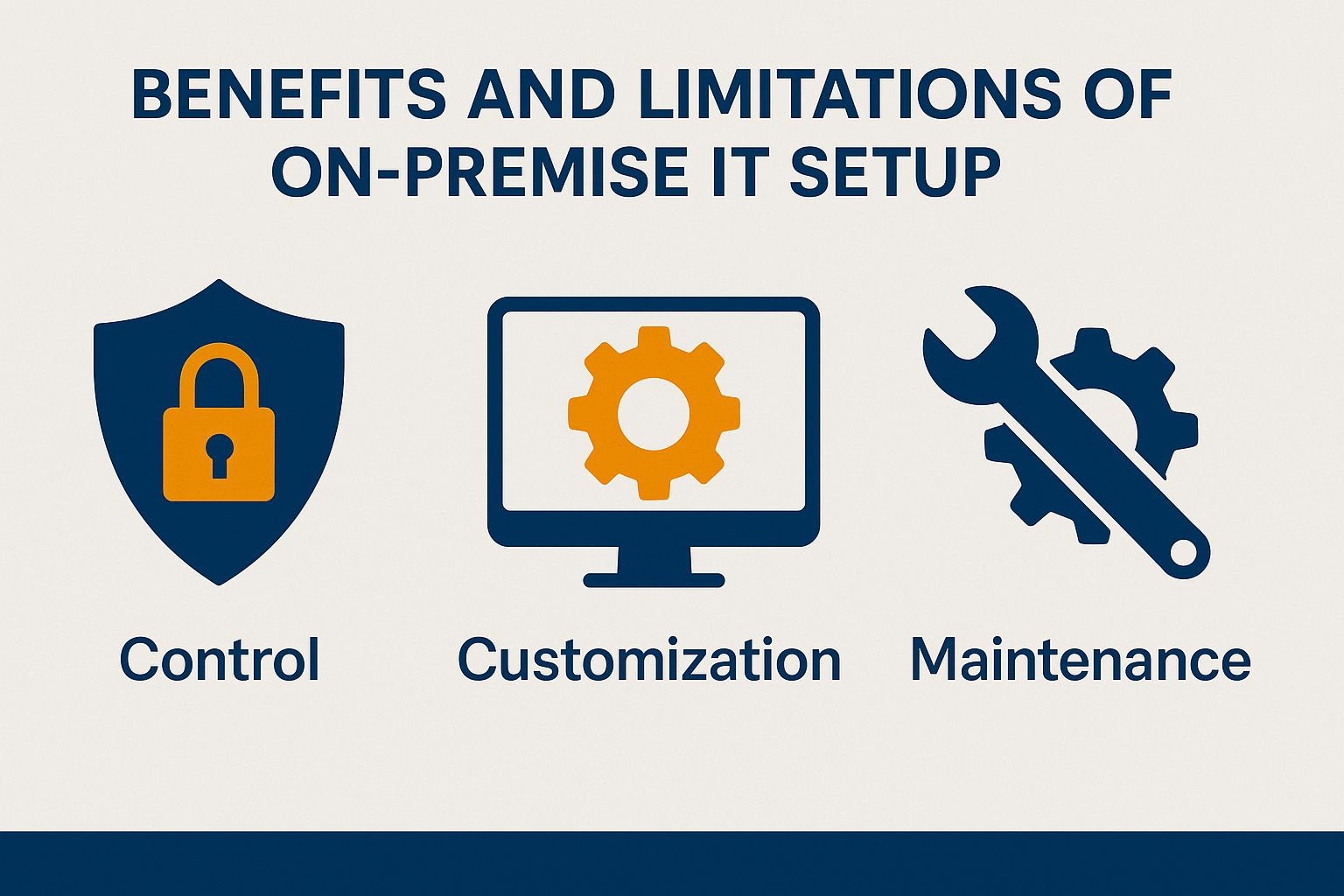
Control, Customization, and Maintenance Factors
A key advantage of on-premise IT setups is control. This control allows customization of systems and applications for specific security needs. However, this enhanced control typically comes with higher maintenance costs, the necessity for dedicated IT personnel, and increased complexity in system upgrades.
This control is essential. It allows businesses to tailor their infrastructure to specific needs, especially for hardware upgrades and backup solutions. Proper management of these setups can also mitigate the risk of vendor lock-in, which can be a significant concern if organizations become overly reliant on specific providers, influencing their long-term strategy.
By strategically developing the skill sets of their IT personnel, companies can not only lower ongoing maintenance costs but also foster a competitive advantage, ensuring that their systems remain adaptable and capable of evolving in response to changing technological landscapes, thus supporting digital transformation and business agility.
Choosing the Right IT Setup for Your Business
Choosing the right IT setup, whether cloud or on-premise, requires understanding the organization’s needs and goals.
This process involves evaluating the pros and cons of each option. Key factors include risk assessment, budget limits, total cost of ownership, and long-term efficiency.
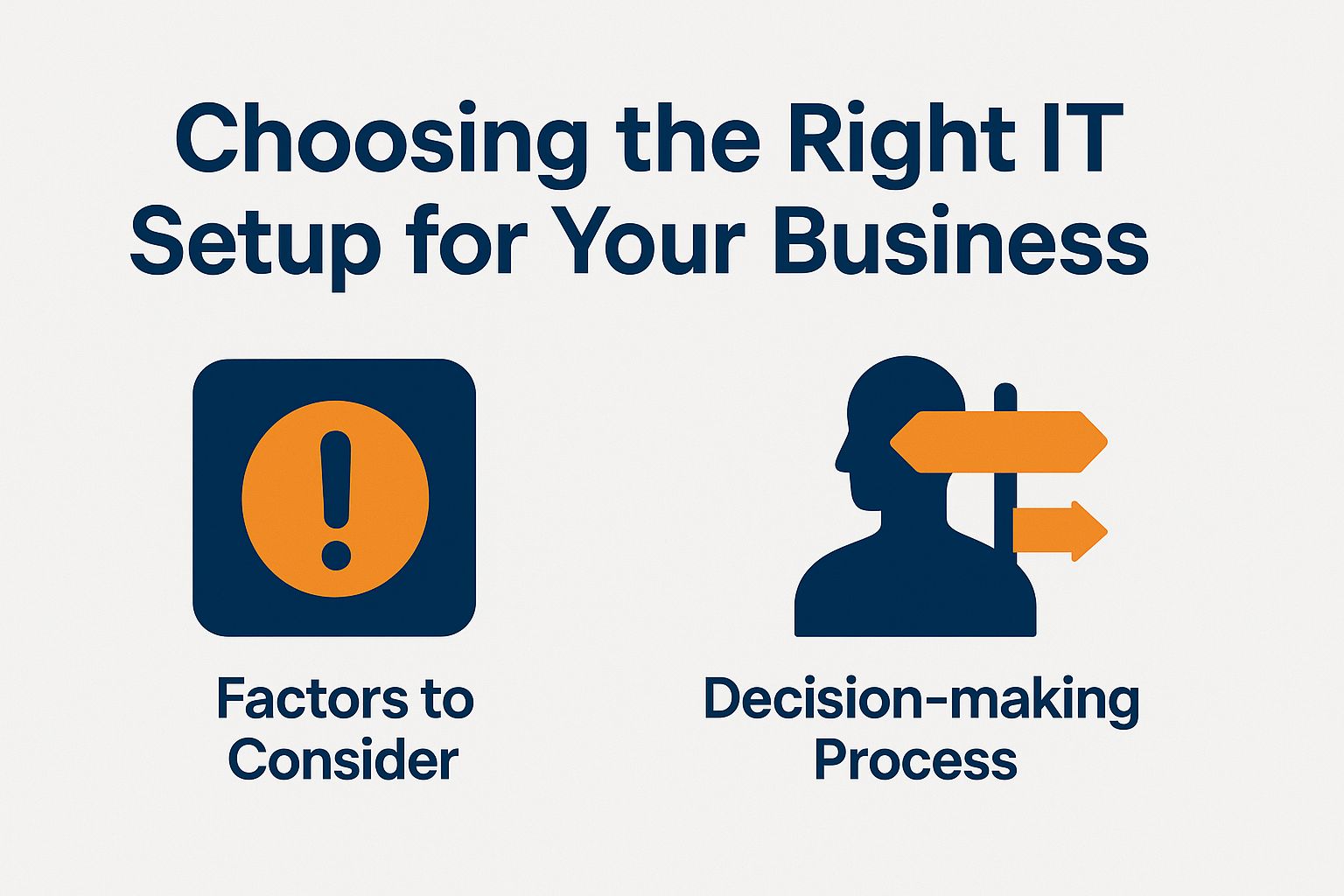
Factors to Consider and Decision-making Process
When businesses are tasked with choosing between cloud and on-premise solutions, they must carefully evaluate several factors, including specific business needs, scalability requirements, security implications, compliance regulations, and a thorough cost analysis to shape their IT strategy.
Along with these critical aspects, assessing user experience is paramount, as it can have a substantial impact on productivity and employee satisfaction. Organizations should also consider the level of technical support offered by the vendor, ensuring that reliable assistance and tech support are available when challenges arise.
It is also important to examine the long-term implications of each option. Businesses should see how well each solution aligns with their growth, objectives, and market trends.
By adopting a methodical approach to evaluate these considerations, companies can make informed decisions that enhance their overall operational efficiency, business performance, and competitiveness in their respective markets.
Frequently Asked Questions
What is the difference between cloud and on-premise IT?
Cloud IT uses remote servers for data. On-premise IT hosts data on local servers.
What is the best IT setup for small businesses?
Cloud IT is often more cost-effective for small businesses. It requires less technical expertise than on-premise IT.
What are the benefits of cloud IT?
Cloud IT offers scalability, flexibility, and accessibility. Businesses can expand and adapt easily. They can work from any location with internet.
Are there security concerns with cloud IT?
There is a risk of data breaches. However, reputable cloud providers have strong security measures. They often protect data better than on-premise setups.
What are the advantages of on-premise IT?
On-premise IT gives businesses full control over data and infrastructure. It is a good option for strict security and compliance needs.
Can businesses switch IT setups?
Yes, businesses can switch between cloud and on-premise IT. However, it can be complex and time-consuming. Careful planning is needed before switching.

